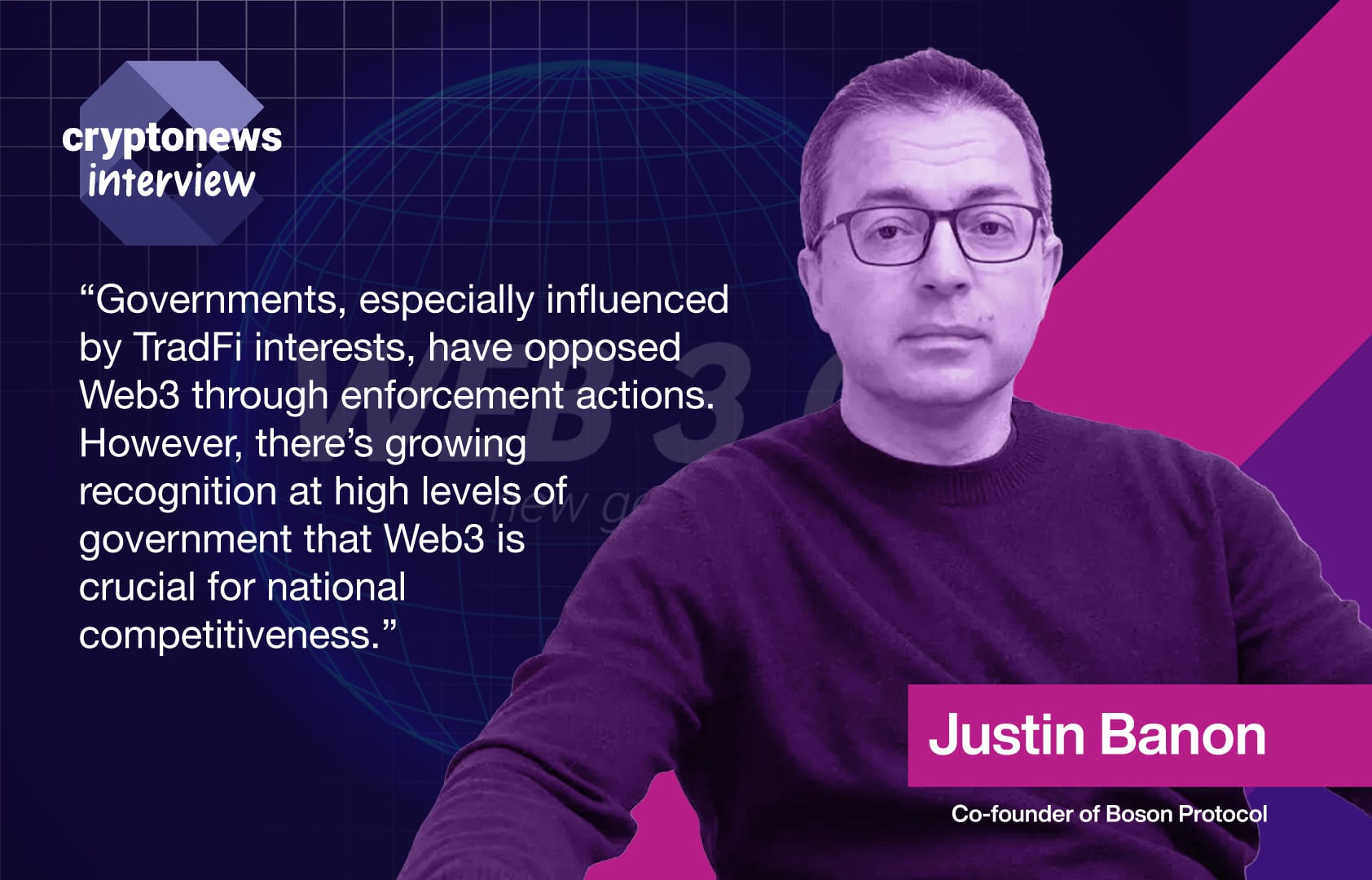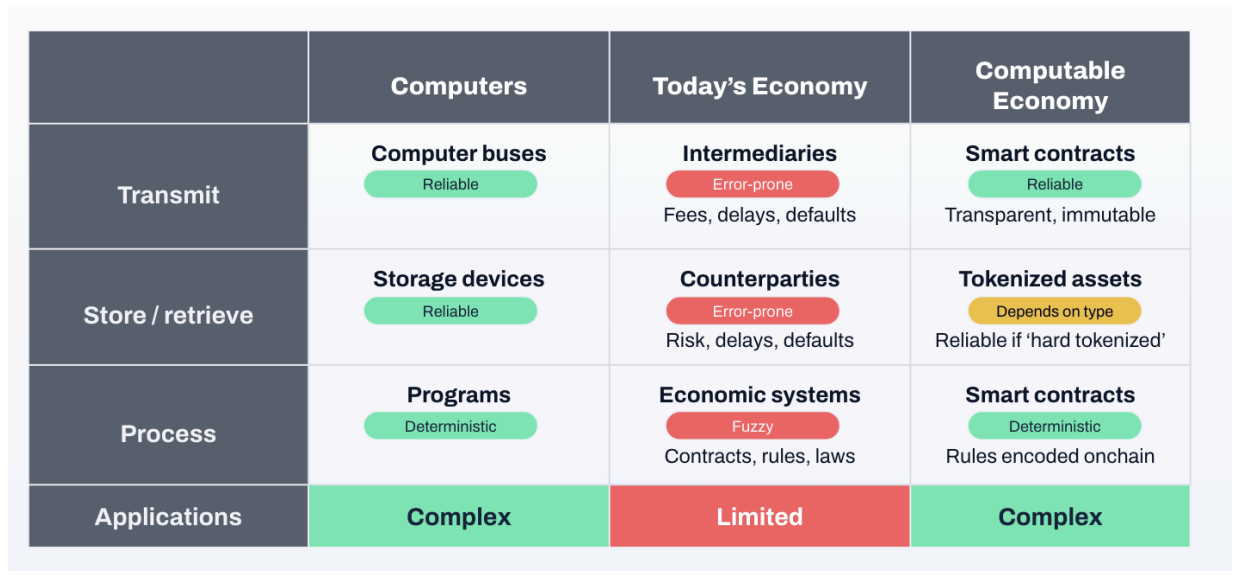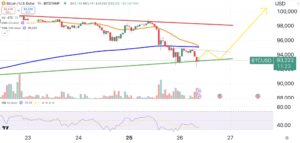Last updated:
 Why Trust Cryptonews
Why Trust Cryptonews

In an exclusive conversation with Cryptonews, Justin Banon, the founder of Boson Protocol, shared his vision for a “computable economy” and the transformative potential of real-world asset (RWA) tokenization.
Boson’s decentralized framework for verified transactions is pushing the boundaries of digital and physical asset exchange, aiming to redefine how we buy, sell, and trust assets.
But does this have to be redefined? Let’s find out.
This interview delves into Boston’s approach, exploring the impact of tokenizing high-value assets, navigating regulatory landscapes, and Boson’s unique positioning in reshaping digital commerce.
With deep insights and pragmatic perspectives, Banon reveals the path they’re pioneering in a world where tokenized assets may redefine ownership and exchange.
Let’s dive into how Boson views Web3, regulatory challenges, and the future of a computable economy.
Transforming Web3: Real-World Asset Tokenization
The rise of Web3 has triggered new economic possibilities, but integrating real-world assets into decentralized systems raises critical questions about trust, security, and verification.
Q: How do real-world assets fit into the larger Web3 ecosystem, and what are the key challenges in bringing them on-chain?
A: “Our core thesis is that Web3 enables a ‘computable economy,’ reducing dependency on intermediaries by enabling automated transactions with cryptographic guarantees. For Web3 to truly revolutionize commerce, it must support ‘hard tokenization’ of physical assets. This foundational layer would allow transactions to run with machine precision, reducing risks while enhancing scalability.”
For Boson, the key challenge is ensuring that tokenized assets retain value and integrity within a trustless ecosystem.
Tokenizing assets like luxury goods and real estate involves not just technical rigor but also gaining social acceptance—a balancing act between innovation and practical utility.
Banon explains that they aim to inspire market trust and confidence that these digital representations carry real value by embedding these principles directly into their tokens.
This commitment ensures that RWAs are virtual copies and assets that users and institutions can trust.
TradFi Meets Web3: The Role of Real-World Asset Tokenization in Traditional Finance
As Web3 protocols grow, the line between traditional finance (TradFi) and decentralized finance (DeFi) becomes less distinct.
Banon believes real-world asset tokenization could bridge these two realms, enabling TradFi to incorporate Web3 elements incrementally.
Q: How do you envision RWA tokenization interacting with traditional finance? Could it replace TradFi, or will it coexist with it?
A: “I think that initially, we will see TradFi markets embrace RWA tokenization; as Larry Fink says, “The next generation for markets, the next generation for securities, will be the tokenization of securities.”. However, Web3 technologies are designed to eliminate intermediaries and enable a new alternate decentralized financial system.”
This collaboration could be a tipping point for RWA tokenization, particularly as traditional markets explore more efficient methods for managing and verifying assets.
Banon compared this adoption to the way that high-street travel agents embraced the web by publishing websites, only to be completely replaced by web-native travel agents.
He expected that, in time, traditional financial markets would be replaced by Web3 protocols for tokenizing and trading all forms of value.
However, the discussion goes beyond TradFi’s gradual adaptation; it stresses how Web3-native solutions could fundamentally transform our financial infrastructures.
Banon views this as a move beyond simply mirroring traditional assets but a push for a digital economy in which Web3 systems add value in ways that TradFi models cannot.
Regulatory Hurdles and Opportunities: How Far Can We Go?
Tokenizing real-world assets brings substantial regulatory complexity.
While trust-minimized asset exchange appeals to many, the lack of regulatory clarity poses challenges for global adoption.
Q: How do regulatory challenges shape your approach, and what are the opportunities in navigating this landscape?
A: “Governments, especially influenced by TradFi interests, have opposed Web3 through enforcement actions. However, there’s growing recognition at high levels of government that Web3 is crucial for national competitiveness. This shift is driving the need for clearer regulations and infrastructure to support the crypto industry, offering opportunities for more favorable frameworks for Web3 and RWAs in the near future.”
For Banon, regulation presents as much opportunity as it does challenge.
With governments increasingly examining blockchain’s potential, Banon expressed that even Boson is ready to adapt to evolving laws while advocating for a balanced regulatory approach that promotes growth while protecting consumers.
This dual-focused strategy enables companies like Boson to stay compliant and build trust with both users and institutions, potentially accelerating mainstream acceptance of tokenized assets in finance.
This approach not only safeguards the ecosystem but also strengthens the industry’s credibility.
Standing Out in a Crowded Space: How Boston Did it
Amid so much noise around tokenization, with many companies trying to catch up with the next big thing, it is curiously subjective to know how the competition has been for Boson.
In the competitive landscape of Web3, Boson Protocol has distinguished itself by focusing on verified, decentralized transactions.
Their approach allows users to control tokenized assets across a spectrum, from everyday goods to high-value items.
Q: What sets Boson apart from competitors in the RWA tokenization sector?
A: “Boson Protocol serves as Web3’s decentralized commerce layer, enabling the tokenization of commerce physical assets in a trust-minimized and highly efficient way.”
This dual-focused approach offers Boson Protocol a competitive edge, addressing the broader market’s demand for decentralized systems that operate across asset classes.
The Computable Economy: The Future of Digital Economy?
Boson’s vision is centered around the concept of a “computable economy.”
Banon explained that they’re using smart contracts to create a self-sustaining economic system in which assets can be exchanged securely without intermediaries.
Q: How will a computable economy shape the future of commerce, and what potential does it hold for society?
A: “One of the major benefits is the ability to internalize economic externalities, such as the environmental costs of burning fossil fuels, allowing for more sustainable economic practices. [..] Additionally, a computable economy would bring about a step-change in economic provisioning—both in production and allocation—helping to solve long-term challenges like becoming a multi-planetary species.”

Banon’s key vision for a computable economy is simple: driving meaningful change by creating an ecosystem that supports transparent, automated exchanges.
This vision could transition commerce from short-term gains to an economy aligned with sustainability and societal benefits if realized.
Boson Protocol’s approach to a computable economy tackles systemic inefficiencies, offering a model where digital and physical assets coexist securely.
This shift requires overcoming regulatory uncertainty, establishing reliable infrastructures, and gaining social acceptance, all of which will undoubtedly be difficult.
While mainstream adoption of Web3-based commerce may take time, we have a step forward now.
Boson’s computable economy may well be the cornerstone of the next digital financial era, one that redefines transaction integrity and value creation.
About Justin Banon

Justin Banon is a leading technology and thought leader in the Web3 space, focusing on the tokenization of physical real-world assets. He co-founded Boson Protocol, a decentralized commerce layer that raised $36 million in 2021 and was recognized as a World Economic Forum Technology Pioneer. In 2024, he launched Fermion, a protocol for the verified tokenization and fractionalization of high-value assets, positioning both Boson and Fermion as essential infrastructures for asset tokenization.
An engaging speaker and writer, Justin has contributed to major publications like Coindesk and Blockworks, and has appeared on CNBC and at events such as Davos and NFT NYC. With degrees in physics and advanced studies in Digital Innovation and Crypto Technology, he also serves as a partner at Outlier Ventures, mentoring startups in the Web3 space. His mission is to build a computable economy that unlocks wealth and drives human progress through innovative decentralized solutions.
















